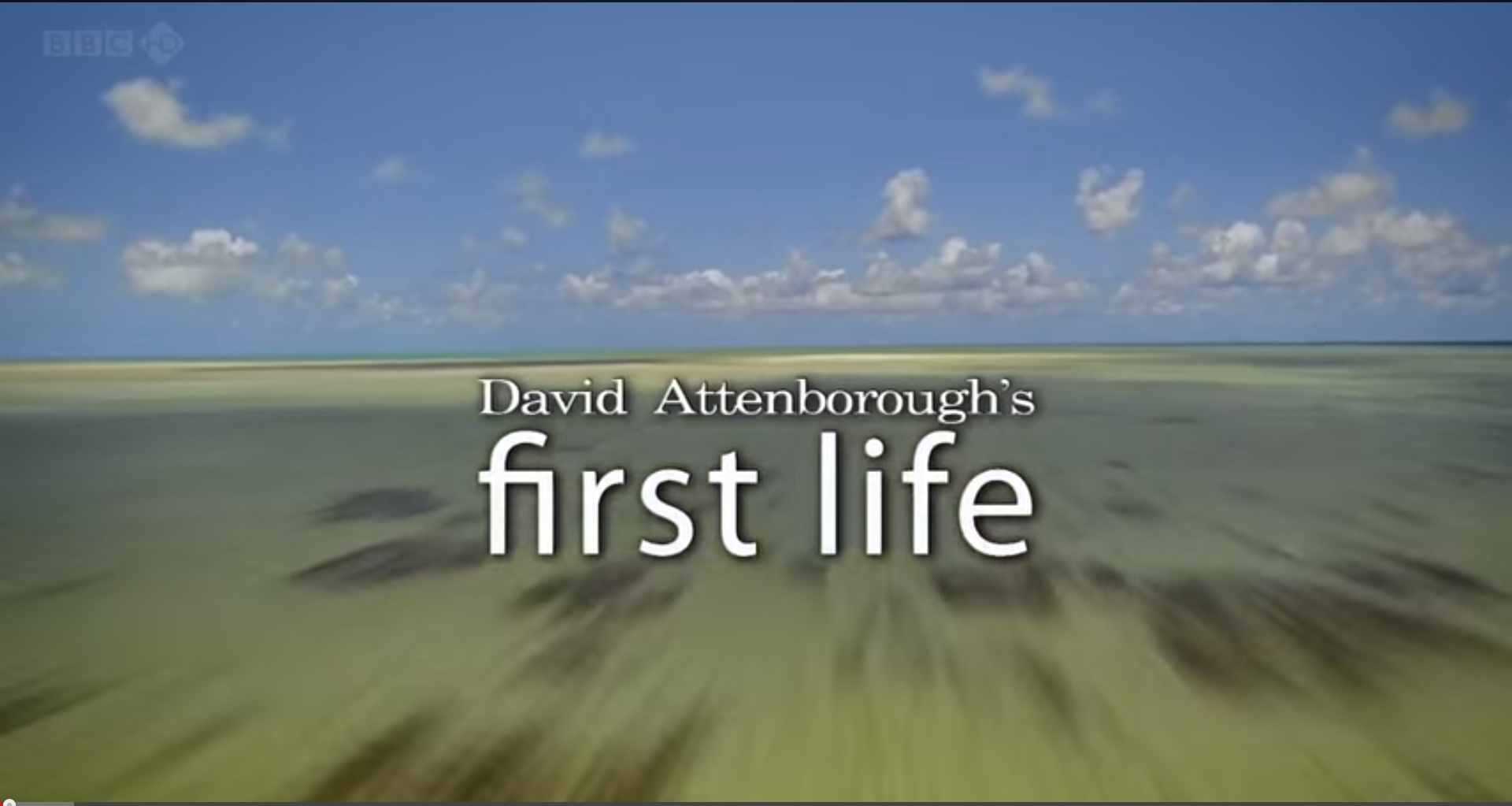BBC’s First Life is a marvelous encapsulation of life’s evolution in two episodes. Episode one “Arrival” covers major events until the Cambrian Explosion. If you are here because you want to know about the origins of life you may be slightly frustrated. The episode will briefly mention underwater hydrothermal vents as possible locations that life may have started and will mention about stromatolites which appeared in geological history around 3.5 billion years ago and that’s it. It will not talk about how the first living cell with a replication machinery evolved and you will not hear about RNA World Hypothesis as well. The major focus will be on Ediacaran when first all five kingdoms of life were already established. A documentary on pre-Cambrian era was badly needed and this documentary series fills the gap successfully.
We first get introduced to an iconic sessile marine fossil called Charnia from that era first discovered in Charnwood forest in England. Then the episode makes a flashback and summarizes a few major geological events such as Snowball (or Slashball) Earth that prepared the conditions that lead to subsequent emergence of multicellular life. The documentary vaguely mentions about the Great Oxygenation Event that followed Snowball Earth. According to one hypothesis, 2.7 billion years ago oceans began to receive less mineral nutrients due to an abrubt reduction in volcanic activity. Nickel was a key cofactor used in a crucial enzyme of methane producing unicellular organisms (they were not bacteria) that dominated the oceans by that time. Nickel starvation reduced methane production which is a strong greenhouse gas and lead to extreme drop in global temperatures. For brevity the program lumps at least four major glaciation events into a single snowball earth event and introduces us to the fact that photosynthetic organisms survived and the rest is history. A recent phylogenetic study of cyanobacteria traced the evolution of multicellularity to a time before the Great Oxidation Event. This means photosynthetic organisms existed marginally before the catastrophic collapse of the methane producing unicellular organisms. We can see the first effects of oxygen in spectacular banded iron formations in places like the Dales Gorge of Australia. Following the collapse of methane producers by nickel starvation, photosynthesizers took over the shallow seas in the form of stromatolites. Today living stromatolites are found in very few places like the Shark Bay of Australia or Bahamas. Places like the Salda Lake of Turkey harbors freshwater stromatolites.
Multicellularity evolved at least a dozen times independently in plants, algae, animals and fungi. Sponges are one of the most ubiquitous biological examples to demonstrate multicellularity in animals.
We then travel to Mistaken Point, Newfoundland where one of the best representational Pre-cambrian fossils exists. None of these animal-like fossils show signs of mobility. One of the characteristic fossils is Fractofusus misrai. They are quite large multicellular organisms with extremely simple two dimensional fractal pattern branching body plan. They must be absorbing dissolved carbon-based nutrients by simple diffusion. Here the documentary doesn’t ask the question where these nutrients are coming from. However even in pre-cambrian times evidence that photosynthetic organisms were already colonizing land surfaces as early as 850 million years ago. Run-off from the land was rich with carbon-based nutrients fixed by the early photosynthesizers colonizing the land. Perhaps the most striking about the Mistaken Point fossils were their simple but modular body plan. It was an experimentation phase for more complex body organization types that we see around us today.
Then we are taken to Ediacara Hills of Australia where the famous fossils of earliest representatives of todays major kingdoms of life are established. Fossils of the Ediacaran biota had more elaborate body plans and were able to evolve key innovations such as digestive track, teeth and a head region. Most important of all Ediacaran animals had bilateral symmetry and were able to move and sensory capacities evolved towards a head like Spriggina. Some of the Ediacaran fossils also show another key innovation of higher life forms: sex. Sex speeded evolution for longer living species. Funisia is a curious fossil that shows similarities to corals.
Ediacaran biota was wiped out almost entirely by evolution of predators that had hard body structures like teeth. The synchrotron technology now enables non-destructive profiling of fossils at unprecedented detail.
Finally, comes the well known period of Cambrian Explosion. If we look at the evolutionary tree we can see that major life forms as we observe today have their branches sprout out in that era immediately following the Ediacara.



4 Comments
very cool
Do Archaeobacteria sporulate?
They appear to have lost sporulation (check out the phylogenetic tree in Figure 4): https://www.ncbi.nlm.nih.gov/pmc/articles/PMC5327842/